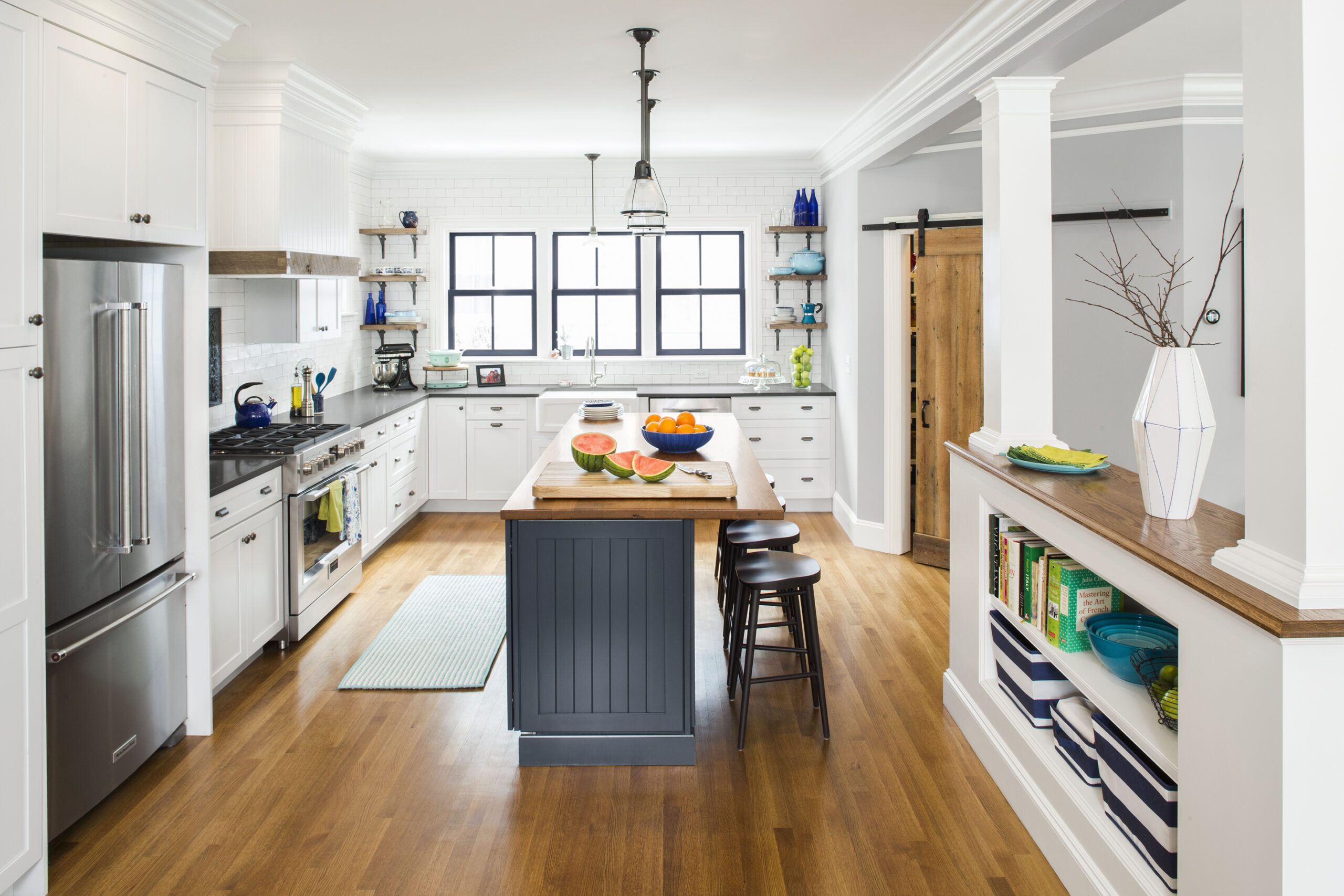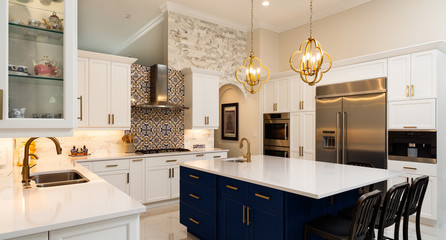A kitchen remodel is an excellent way to add value to your home or make it more comfortable. There are many reasons why you may want to remodel your kitchen, such as:
It is important to plan out what you want before starting a project. This will help you with the budget and scope of work for contractors. For more information, just visit this https://www.kitchenremodelsandiegocal.com/ to proceed.

Whether you’re tired of tripping over your peeling linoleum flooring or need more space to cook and entertain, kitchen remodeling may be in your future. However, before you start breaking up old cabinets or tearing out outdated appliances, it’s important to do some planning. This will help you keep the project on schedule and avoid costly mistakes. Here are the five stages of a successful kitchen remodel:
The planning stage is all about envisioning what you want your new kitchen to look like. You can get ideas by looking at online blogs, magazines, and photo galleries. Create a kitchen mood board once you have a rough idea of what you want. This will give you a visual representation of your vision and allow you to make necessary adjustments.
This is a crucial step because you’ll have to consider structural changes. For example, if you want to relocate your sink or stove, you’ll need to move pipes, which means more labor and materials. Similarly, if you’re going to change the layout of your kitchen, you’ll have to modify existing walls or add an extension. This can be a time-consuming and costly process, so it’s best to hire an experienced contractor.
You’ll also need to determine if you can stay home during remodeling. This will depend on the scope of the project and your budget. If you can’t wait, plan meals and prepare a temporary kitchen. This could mean staying with friends or renting an apartment.
While the planning phase isn’t as complicated as the actual work, planning ahead is still important. This is especially true if you’re hiring a general contractor. They’ll need to know when you need to order materials and how long the job will take. It’s also a good idea to apply for any necessary permits, which can lead to costly fines.
Before starting the demolition, you should prepare your home for construction by storing any appliances you can’t live without. It would be best to protect the surrounding areas from dust and debris. This will save you money on waste removal and make the renovation more comfortable for your family.
In the design stage, you begin to make real decisions about what your new kitchen will look like. This is a critical point in the process, as it will determine how much work you will need to do and whether the project will be affordable.
It’s also a good time to decide your goals for the remodel. Whether it’s improving the flow of your home, boosting resale value, or just making a more comfortable space, the reasons behind your remodel will greatly impact the result. Be sure to prioritize your needs and list what you want to change about your kitchen before starting to avoid getting carried away with ideas and spending more money than you intend to.
This step involves creating a layout for your new kitchen, including defining the location of appliances and any structural changes. Including a refrigerator, sink, stove, and dishwasher in your layout would be best. Make sure to consider these fixtures’ size, functionality, quality, and style as you design your kitchen.
Another important consideration is the kitchen’s lighting. Strategically placed task lighting is crucial for creating a functional kitchen. Aim for a balance of natural and artificial light to enhance the appearance and increase visibility throughout your kitchen. Lastly, storage is an important factor in kitchen design. Organizing your cabinets and pantry is key to efficient storage. For example, it’s a good idea to store items such as cookie sheets and cooling racks in tall, narrow cabinets so that they’re easy to find.
After you have a rough draft of your kitchen layout, you’ll need to decide on the materials and finishes you will use. Then, you can start to implement your kitchen remodeling plan. Ensure you consider the cost, durability, and maintenance of different materials.
This is also the time to apply for a permit. If you’re working with a general contractor, they should handle this for you, but if you’re going DIY, it’s up to you to obtain the proper permits and inspections for your kitchen remodel.
The budget stage of a kitchen remodel is crucial to keep your project on track. It is the first step in setting and adhering to a remodel budget, where you will see the most cost savings. Creating a detailed list of everything you want to include in the remodel will help ensure all costs are covered. It is also a good idea to have an allowance for unexpected expenses that will likely pop up as the project moves along.
Cabinets are the largest expense in a kitchen remodel and can account for up to 30% of the total project cost. Choose stock or semi-custom cabinets rather than custom. Alternatively, consider refacing or refinishing existing cabinets to extend their life. Countertops are another major cost, ranging from simple laminate to elegant stone products with a hefty price tag. It is a good idea to weigh the pros and cons of each option before making your final selection.
Appliances are an expensive investment, and if you need more money for all new ones, consider buying larger sizes and designing your cabinets around them. This way, you can replace them as the budget permits.
When calculating your budget, include the cost of hiring someone to haul away old appliances and scrap materials. Hiring a professional to perform this service can cost up to $50 per hour and may increase as the size of your kitchen increases.
You’ll also need to factor in the cost of labor to construct your kitchen. A general contractor typically charges an average of $25 to $150 per hour, while specialized trades like plumbers and electricians can cost more.
Before beginning the construction process, it is important to consider your home’s long-term resale value. If you plan to sell your house within the next five years, a complete kitchen renovation is likely not worth the investment.
Once the plans and budget are approved, work can begin on your new kitchen. This will start with framing new walls and progress to plumbing and electrical work. Once the structure is in place, it’s time for the fun part: the finishes!
If you still need to do so, meet with a general contractor who is licensed and insured. The initial meeting will take 1 to 2 hours, during which the professional will get an idea of what you want to accomplish with your kitchen remodel and take measurements and photos (if they don’t have a showroom nearby).
A well-qualified contractor can provide an estimate for your project. This estimate will include a breakdown of all costs and the estimated timeframe for the entire remodel. At this stage, it is also a good time to consider your financing options, especially if you plan on getting a renovation loan. RenoFi’s knowledgeable Renovation Advisors can help you understand your options and make the process as simple and stress-free as possible.
Once you have an estimate from a qualified contractor, could you review it carefully? Often, you will find that a remodeling job requires you to make sacrifices or compromises. A good contractor can offer suggestions and advice to help you achieve your goals while staying within budget.
Next, the contractor will begin construction of your new kitchen. This may involve removing old appliances, cabinets, and fixtures. It will also include some major framing work if you are adding or removing windows or if walls are being moved. Be sure to have your contractor walk through your house with you during the remodel to ensure everything is done correctly and that the final result will be what you envisioned.
It is important to keep records of the work being performed throughout the remodel. This will come in handy when you have to pay or when there is an issue with the quality of work. It is also a good idea to make notes of any questions or concerns you have. Finally, when the job is complete, make a final payment and walk through your kitchen with the contractor to ensure that it has been completed to your satisfaction.


